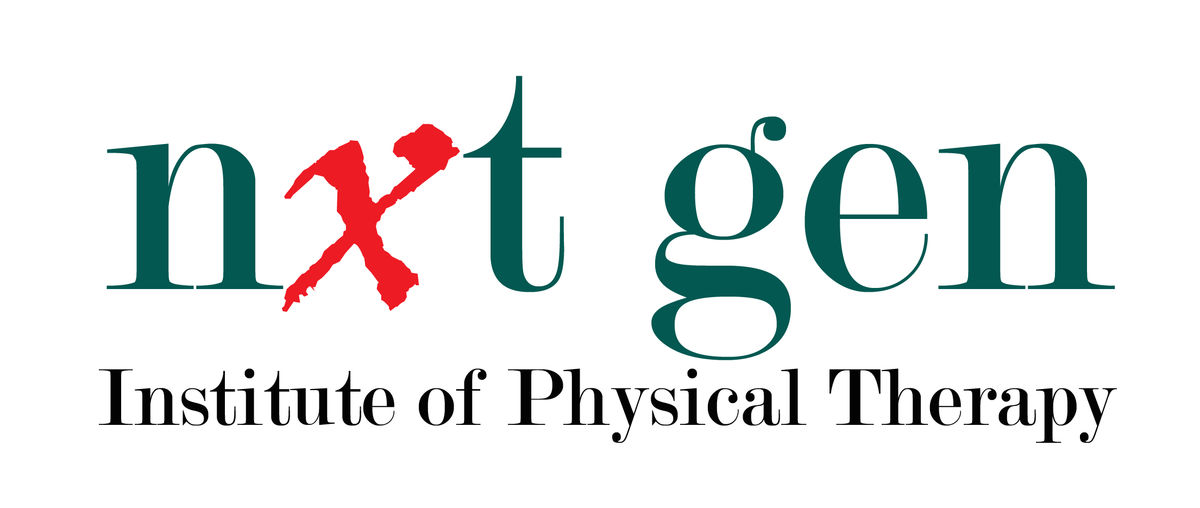-
About
- About Listly
- Community & Support
- Howto
- Chrome Extension
- Bookmarklet
- WordPress Plugin
- Listly Premium
- Privacy
- Terms
- DMCA Copyright
- © 2010-2025 Boomy Labs


 Joe Brence
Joe Brence
Listly by Joe Brence
Here are the submissions by #DPTStudents for the #HackNxtGenPT contest. Review the submissions and vote for you favorite! Voting for "Viewers Choice" ends 3/31/2015.

My idea to help the field of PT evolve combines a few things that I am both passionate about and have experience doing.
In 2015, I will be launching the "PT Pintcast", a PT centered podcast that has student and recently graduated PT's as our intended audience. As a former radio dj with more than twelve years of broadcast experience, I know that interviewing is a skill, and not one that comes without practice. I also know that a well done interview can make people pay attention.
I'd like to make our conversations sound as if you met a really interesting and intelligent PT professional at a networking event, and you got him or her going on a topic that they're passionate about over a beer.
I think what you say is as important as how you say it, which is where I think our PT Pintcast will stand out.
So, this is my idea on how to Hack the NxtGen of PT's. Here is my official submission presentation: [http://youtu.be/M2jcKvjr_VU ]
We begin recording episodes of the PT Pintcast this Spring.

Pain Neuroscience Educational App: Knowledge is Growth
Category: Educational App for Iphone, Ipad, Android etc.
*Purpose: *Patients with chronic pain are present in all settings of Health Care and carry potential for prolonged lengths of care. Over the last decade, there have been considerable advances in research on the brain’s role in chronic pain and the positive benefits of pain neuroscience education. Although this information is available through continuing education courses and the Internet at large, many physical therapists are not yet aware of the role the brain plays in a patient’s perceived pain. The purpose of this educational app is to help fuel compassion from physical therapists for their patients through an understanding of the brain’s adaptions during pain. In addition, it will provide a source for helpful resources for how to successfully educate their patients to provide potential for breaking the pain cycle. Through these two objectives, the mission of this app is to spread information to not only therapists who are working with these patients with chronic pain, but to also help spread awareness to all settings in order to provide incentive for preventative education during the acute stages. This spread of knowledge and ideas can help not only advance physical therapy in its role in Health Care for patients with chronic pain, but more importantly provide more patients with the opportunity to overcome their fears and be given a new outlook on life.
*Contents: *The Pain Neuroscience Education App will include these Main Tabs:
1) Overview
a. Vision Statement
i. Creating a world of compassion for those in pain. b. Mission Statement
i. To provide an educational app for physical therapists on current pain neuroscience education in order to spread knowledge and ideas for helping patients with chronic pain.
c. Why this is important
i. A brief summary of factual information about chronic pain,
the impact on healthcare at large and a few examples of the
positive benefits of pain neuroscience education. d. Who this is for
i. Have brief examples of how this is important in any area of healthcare
1. Inpatient care is important to help plant the seeds of change and for prevention of chronic pain
2. Outpatient care is where most of the pain neuroscience education can be utilized
2) Pain Neuroscience Education (PNE) for Therapists
a. How the brain perceives pain
b. Why the brain creates pain as an output
c. Chronic adaptations for patients in prolonged pain sensitized
states
d. How Physical Therapists can help: PNE
3) Patient Education Resources: Bringing PNE to Practice
a. Books References for Therapists
b. Patient Education Book References
c. Internet Sites
d. Helpful YouTube Videos for Patients
e. Bringing PNE to the community
i. Examples of PowerPoint Presentations or educational talks 4) Continuing Education Courses
a. A list of continuing education courses for PNE by State or Country 5) Blog
a. Peer reviewed blog on PNE
b. Opportunity for comments or questions to spur learning
Potential for Success:
• An app provides the opportunity for quick, on-the-go information for busy therapists.
• Would target a variety of physical therapy audiences
• Tabs in the app help to address the what, why, where and when questions for
PNE
• Blog provides opportunities for application and continuing spread of information
• App can be rearranged to market to patients/greater community as well as physical therapists in order to target more consumers to spread the word. Would have two tabs in the “Overview” section for “HealthCare Worker” and “General Public” to give the consumer the option of either tab for their desired level of education on PNE.
Possible Constraints:
• The possible success for this app is the potential for ease of use and easy access to information. However, links to resources may be better utilized as a website.
• Much of the valuable PNE information may be copyrighted to various programs or need to be purchased in an educational resource. Need to make sure app does not contain copyrighted information.
• Would need to advertise the app to multiple sources in order to spread the information to a variety of settings.

“Knowledge itself is power.”
The US has a health literacy problem, yet over 80% of the US population has access to health information via an internet connection. Unfortunately, much of the information available to them, either from their healthcare providers or internet sources, is inadequate, incorrect, or in language that may not be easily understood.
Physical therapy has a wide variety of interventions at its disposal, one of which being education. Although the effectiveness of any intervention is reliant upon the clinicians’ willingness to provide and the clients’ willingness to accept said intervention, education or the internalization of the education may be the most powerful. This is because successful outcomes are maintained by altering behavior and perception. However, this change in belief takes time, and a physical therapy plan of care only lasts so long. It may not be entirely possible for a client’s paradigm of thought to be changed in the given amount of one-on-one interaction time. It is clear that the practice, as a whole, is in dire need for effective and efficient person-centered communication and education, especially as the amount of visits per plan of care shorten and payment shifts from fee-for-service to performance-based pay.
While almost all physical therapists recognize the importance of educating clients, the effort and methods of explaining certainly varies. Many practitioners educate using the biomedical/biomechanical model that has been shown through recent advances in pain science to be inadequate and ineffective as compared to the biopsychosocial educational model. What we seek to do is provide resources to improve client education and outcomes within the context of the biopsychosocial model by means of different internet media listed below.
“Chalk It Up” Video Collection:
1.) Purpose – Educate, enlighten, and empower patients to understand their clinical
presentations and their experience through physical therapy
2.) Audience - Patients
3.) Description – A YouTube channel will be created with a collection of 2-5 minute
educational videos targeted towards clients of physical therapy (and all others who choose to watch). Video topics will include explanations of the purpose of physical therapy, physiology, pathology, treatments/interventions, and pain. Each explanation will use non-threatening language and be framed within the biopsychosocial model. Format of the videos will consist of fast-forwarded footage of drawings on chalkboards inspired by AsapSCIENCE’s videos (see https://www.youtube.com/watch?v=2ZiRZrYo5tA) and the “Draw My Life”
series (see https://www.youtube.com/watch?v=ypYnk11d_Ic) on YouTube. Practicing physical therapists will be invited and encouraged to write scripts explaining a topic within the aforementioned list and record their voices explaining that topic. Mike, Tim, or hopefully someone more talented in illustration, will draw and record the animation for the video on the chalkboards. Practitioners may then refer clients to these videos as free sources of well- developed, evidence-influenced information if they wish to know more about their clinical presentations. The first video is planned for release Summer 2015.
Storytelling Blog:
1.) Purpose – Educate, enlighten, and empower practitioners to adopt the
biopsychosocial education approach through stories, metaphors, and “layman’s terms” explanations of treatments, physiology, pathology, and pain that may then be relayed to their clients.
2.) Audience – Physical Therapists, Student Physical Therapists, Physical Therapy Assistants (may open up to other practitioners as this potentially grows)
3.) Description – The blog will be an open-source medium where PTs, SPTs, PTAs, and student PTAs are encouraged to submit and post their own biopsychosocial- geared explanations of physiology, pathology, treatments/interventions, and pain. The top of the page will have several tabs/headings for the aforementioned categories, and within each category, practitioners will find specific topics to share and discuss their stories and opinions of others’ explanations. There will be an additional category for “out-of-clinic experiences” that influenced their practice within the biopsychosocial model. These “out-of-clinic experiences” will range widely due to the individual nature of what influences practitioners, including but not limited to: music, nature, landmarks, books, television, grocery shopping, etc. Practitioners will have an abundance of non-threatening explanations that may be applied to future clients. The overall goal is to improve client education and practitioner communication skills that will thereby foster trust, compliance, and good therapeutic alliances between clients and practitioners.
Ultimately, we wish to remove barriers to educating patients, both directly and indirectly. We are removing barriers directly by offering free educational videos that anyone with an internet connection can access. We are also removing barriers indirectly by offering a resource for clinicians to learn, discuss, and improve upon their biopsychosocial communication skills.
We’re passionate in improving health literacy – empowering clients to take hold of their clinical presentations and better understand their bodies because... “Knowledge itself is power.”

Unleashing Your Innovative Smarts: Ideas stemming from Bill Stainton, PPS 2014
In this increasingly competitive business environment…
It hurts if you are stuck in a rut!
Must come up with solutions to new and old challenges
In this presentation, you will ask yourself, and have a resolution for, the following questions…
How do you break old patterns?
How do you learn to envision challenges as opportunities?
How do you learn to see things differently?
Who is creative?
Physical Therapy is an art
YOU must be creative!
Keep your patients interested, keep them coming back
Make the community want to come to you
Keep your employees/peers interested and want to come to work
About me…
When a team works together creatively, beautiful things can happen
Get in touch with your own unique sense of innovation and creativity
Creativity is about connecting the dots
How do you find solutions?
There are many right answers to every problem.
Rather than choosing the first right answer that comes to you, find the second right answer. Maybe it’s even better.
Some of the worlds greatest ideas have come after a lul in the conversation.
Some ideas have been thought of as absurd. Where are they now?
What do you struggle with at Axis?
No shows?
Time management?
Money?
Recruiting?
Retention?
Let’s take 5 mins to brainstorm the relationship between _______ and…
This is what creativity feels like!
Cultivate the unconventional thinkers in your life, even outside of your profession
In any tough or unique situation, go into a creative space first, and then tackle your task
Is there ever friction within the team?
Agree on one thing:
Everything could always be worse!!
Here’s a situation, how could it be worse? Let’s take 5 mins to brainstorm
Team activities like such as these can Lighten the mood
Make your workplace fun --> creativity
In conclusion…

I want to help clinicians become broad spectrum thinkers. I am not a guru, but biases and cognitive faults surround us in all aspects of life, and we, as science based practitioners, need to know our own reasoning methods. The whole reason we need research is that it is the best we can do to eliminate our own biases. If we could see life clearly, research would not be needed. The PTBrainTrust.wordpress.com blog format created thus far deals heavily with perception issues and I do enjoy sharing these subjects (ex: It’s Your World). Sharing complex ideas in the form of metaphors and stories is a great way to broad cast information.
We are no longer movement techs, we are a thinking profession and I encourage those around me to elevate to this level. This method is my singular medium for influencing the PT world, thus far.
In moving the profession forward, I believe we need to become more valuable to other providers, and they, in turn will return the favor. My concept is for official Referral privilege to other specialists. We make the most impact by helping those around us. If we can refer directly to a Cardiologist / Neurologist / Orthopedist / Pulmonologist / Rheumatologist, etc then bonds can be strengthened and relationships outside of our own world can be improved. Primary care physicians may not support this at first, however it does take some things off their plate by allowing us to refer directly. Documentation will still be shared with all parties and we can more directly help our patients and our specialist colleagues as well. We are, at this time, the highest trained practitioner a patient sees for more than 15 minutes. We are equipped with differential diagnosis knowledge of when to refer out, and we have time to get the information from the patient. It is not that we are smarter than other providers; it is that we spend the time with the patients and watch them move. This allows us to pick up on things that others miss.
This, in turn, will give us outside support for full Direct Access, since we can benefit other physicians in the process. I do not take this position lightly, nor do I think we are educated to the level of physicians. I also do not wish for us to be evaluating and referring out IBS patients all day. That being said, we know movement deviations of many pathologies, and are becoming much better trained in ruling out and knowing our scope.

The following proposed capstone project has a singular goal: to increase membership in the American Physical Therapy Association.
I propose to investigate and analyze the membership practices, platforms, and data of the American Physical Therapy Association and other physical therapy associations in foreign, industrialized nations. This includes foreign and domestic membership benefits, prices, and value as compared to economic factors such as average income of a foreign and domestic physical therapist. The purpose of these actions is to determine the best practices of recruiting and retaining member in a professional association. This will include analysis of determination of best practices patterns. According to the World Confederation of Physical Therapy, 46,450 physical therapists were employed in the United Kingdom. Of those physical therapists, 39,208 were members of the CSP (84% membership rate) 1. The APTA, in comparison, has 198,686 physical therapists with only 58,861 members (29% membership rate)2. The analysis of data and practices will consist of the following: overall out of pocket cost and pricing structure, types of membership offered, benefits of membership, and other actors such as system of regulation of each professional association, legal authority, etc. Economic factors such as average salary with equivalent currency rates will also be considered as to provide a fair comparison between nations with various economic systems.
The data analysis will be twofold: to determine the best practices for the recruitment and retention of physical therapists in their respective professional associations and also to analyze the barriers for US physical therapists in becoming APTA members. The analysis will include trends and correlations between and within each of the foreign professional associations selected which will then be compared to the APTA practices for the same data points. Nations with the best and worst membership rates will be compared as to their practices. The goal of this analysis will be to propose changes to the current membership recruitment and retention practices of the APTA. These proposals will have the purpose of increasing APTA membership and therefore increase the legislative funding and presence of physical therapists nationally.
References:

Physical Therapy and the entire medical industry are in the midst of a very interesting transition. Patients are becoming increasingly empowered and they have been held hostage for too long getting too little information. They are sick of being passive participants of their own health. There’s a reason things such as FitBits and FuelBands are so popular but that is just the beginning. Recently, a biomedical professor at Columbia University unveiled a plug-in for an iPhone that will allow consumers to test for STDs in their own home and at a fraction of the price of what it cost to go to a doctor.
These examples are meant to point out that there is a desire for more information and to put that information in the hands of the patients. My idea isn’t some invention like a new type of wearable tech or an iPhone app but What if there were more objective ways to measure physical therapists? Not only would it benefit patients seeking the best medical attention but it would motivate physical therapists to produce better results.
Currently there is very little information available to determine good physical therapist and facilities from the bad ones. Many patients turn to Yelp to determine who should help in their rehabilitation process. Yelp works well to figure out the best place to get a burrito in a five-mile radius but should it be relied on to find a healthcare provider? We need objective measures that are available to the public not only for their own good but for the good of our profession.
_The solution is a simple idea; albeit one that will be difficult to implement. If it was a simple idea with a simple solution it already would have been accomplished. It’s not a revolutionary idea as it is fairly common in most consumer fields; heck it’s not even an original idea. It’s something I thought of while reading Atul Gawande’s “Better.” Gawande, a surgeon, wrote about a variety of ways to improve the healthcare system. _
One of the examples he gave was the story of Annie Page. She was diagnosed with cystic fibrosis in 1997 and was taken to Cincinnati Children’s Hospital because of its great reputation. Actually, it turned out Cincinnati Children’s Hospital was doing quite poorly in regard to its cystic fibrosis patients. How was this discovered?
The Cystic Fibrosis Foundation persuaded these institutions to release its data and were able to identify which hospitals were improving outcomes the most. Those hospitals achieving the best results were then able to be used as examples for the rest. Imagine that. Objective results leading to the betterment of patients.
In addition to just compiling the data though, the Cystic Fibrosis Foundation eventually persuaded the institutions to publish the data publicly. Institutions were able to measure themselves against each other and patients could make more educated decisions about their health care treatment. Is there any doubt that transparency would lead to better results?
Why can’t the field of physical therapy take this same step towards transparency. Some hospitals internally compile data on their patients and outcomes, but where is that data available to the public? The benefits of releasing this type of data are numerous and far-reaching.
Obviously patients would be able to make more informed choices that have a huge impact on their lives and the lives of their loved ones. The information also could serve as a form of patient education as they learn some of the objective measures and outcomes that are being calculated.
With this information available, it would be much easier to do systematic and epidemiological studies to determine the best mode of practice.
It would hold physical therapists and institutions accountable and set benchmarks that will spark motivation.
Lastly, it lends legitimacy to our profession. Most people have no idea of the wide scope of physical therapy practice and couldn’t tell the difference between a PT and a trainer. But the more we can inform the public and provide objective measures to show just how powerful physical therapy can be on a variety of impairments, the more patients will understand what we are capable of. And the more that patients believe in physical therapy, the greater our opportunities to produce favorable outcomes.
Dear Potential Consumers,
We are pleased to present to you the business plan for HEALTH INSITE. This report has been prepared outlining a mobile application (app) available to physical therapists and their patients. The purpose of HEALTH INSITE is to improve physical therapy patients’ outcomes and rehabilitation experiences. This is accomplished by the development of a mobile app available to download by patients of outpatient physical therapy (PT) practices. The app contains features that allow a physical therapist to better track the progression of a patient’s home exercise program and become more responsive to the patient and his/her plan of care. Additionally, the app increases patient compliance and active participation in his/her own rehabilitation by increasing access to home exercise program resources, educational material, and providing important reminders. Finally, HEALTH INSITE promotes improved communication between therapist and patient by providing a secure and user-friendly interface. We believe this product can revolutionize patient care!
We are offering our product at a reasonable price with the hopes that you will join us in improving the rehabilitation experience. Pricing of our product is based on business brackets. Physical therapy practices that operate 1-3 clinics can own our product for only $1,500. Moreover, practices that own 4-10 clinics can purchase our product for $6,000, and practices that own more than 11 clinics can enjoy our product for $16,500. In addition, HEALTH INSITE only asks for $10 of every new patient sale, which provides an opportunity for businesses to make additional income by using our product.
We appreciate your consideration and look forward to hearing your thoughts.
Mission Statement
HEALTH INSITE Executive Summary
It is the mission of HEALTH INSITE to improve the physical therapy patient’s rehabilitation outcome and experience through the use of mobile application technology.
Objectives
HEALTH INSITE aims to improve the physical therapy patient’s rehabilitation experience and outcomes by:
• Providing an interactive, useful, and relevant mobile application (app) that makes it easy to track home
exercise program completion and monitor/report symptoms
• Collecting meaningful information regarding a patient’s home exercise program that will enable the physical
therapist to monitor the patient’s progression and make timely and impactful changes if necessary
• Providing a secure and interactive avenue to promote effective communication between a physical therapist
and his/her patients
• Increasing patient compliance and active participation in his/her own rehabilitation by increasing access to
engaging and informative features, such as home exercise program resources, educational material, and push
notifications for important reminders
• Providing tools for the physical therapist to better track the progression of a patient’s home exercise program
and become more responsive to the patient and his/her plan of care
Culture & Values
At HEALTH INSITE, we value the physical therapy patient and his/her successful rehabilitation outcome and experience. We believe every patient should feel empowered and invested in his/her own rehabilitation and have interactive access to his/her physical therapist. We believe in providing physical therapy clinics with a useful and attractive resource to share with their patients to accomplish this goal. We believe every physical therapist should readily have the information necessary to provide high quality, responsive, and effective patient feedback.
At HEALTH INSITE, we believe that financial success is driven by the patient’s success. We value thoughtful creativity and innovation, collaborative teamwork, and a relentless pursuit of excellence. We promote honesty, transparency, dedication, efficiency, and optimism in our employees and expect the same from our business partners.
**
Business Description**
HEALTH INSITE is a downloadable mobile app aimed at improving the patient’s physical therapy rehabilitation outcome and experience. At some point during a patient’s plan of care (preferably at or just after initial evaluation) a patient purchases access to the app’s features by downloading the app onto his/her mobile device and creating an account, during which the patient will provide the name of his/her physical therapy practice and therapist. Then, the practice/therapist indicated by the patient will confirm the selection, linking the patient’s account to that specific clinic and activating the patient’s account. The patient’s subscription to the app’s features will be valid until he/she is discharged as a patient from that PT practice, or after one year, whichever is sooner.
The primary features of the app include a home exercise program tracker that allows a patient to record information regarding the completion of his/her home exercises (i.e. progression, sets and repetitions, duration, difficulty, symptoms, etc.) and a tracking structure for symptoms (i.e. nature of the symptom, time of day, duration, location on body, severity, description, comments, etc.). This feedback and data will be collected and formatted for easy remote review by the physical therapist on his/her computer system. The information can guide the therapist in determining treatment progression, identifying and addressing issues or concerns, and communicating any necessary changes to the patient... all of this between visits! This allows the therapist to be more responsive to the patient and his/her plan of care.
Secondary features of the HEALTH INSITE app include patient access to his/her home exercise program (i.e. PDFs of exercise instructions with pictures, videos of exercise tutorials, schedule, etc.), access to the patient’s plan of care (i.e. goals, timeline, etc.), and patient access to relevant diagnosis-specific health information (i.e. research articles with therapists’ commentary, information brochures, educational articles authored by physical therapists, etc.). The app will also include the ability for the patient to purchase therapy-related equipment from the physical therapy clinic (i.e. athletic tape, thera-band, ice packs, braces, etc.), a centralized and secure communication/feedback feature (i.e. email and/or text with a therapist, video of a patient in the clinic uploaded to their account, etc.). Finally, the app will also include push notifications for appointment reminders, home exercise program reminders, daily/weekly rehab tips, news, articles, etc. These features promote patient-therapist communication and increase compliance. The app allows the patient to have access to important aspects of their care anytime, anywhere. It’s no longer a problem if the patient loses his/her printed copy of home exercises since they can access them remotely, in video format! Furthermore, the therapist controls which exercises are available to the patient and can add or delete exercises at any time. The patient will be constantly aware of his/her goals and plan of care, promoting an active interest in his/her own therapy, a notion further encouraged by providing
the patient with educational material. Giving the patient the opportunity to purchase medical supplies provides an additional potential revenue stream for the physical therapy practice. Finally, the push notifications are an excellent tool that keeps rehabilitation on the forefront of the patient’s mind and provides a gentle reminder for the patient to carve out space in the day to direct attention to his/her own health rehabilitation.
The app will also provide the patient the opportunity to share their collected health information with other providers, such as a certified strength specialist, athletic trainer, primary care physician, or surgeon. Through the patient’s portal, a link will be provided that allows the patient to submit a signed medical information release form indicating the specific information they permit to be shared and the contact information of the medical provider with whom they wish to share their personal health information. The indicated provider will then receive a personal email with disclaimer information and a private code to access the app, where he/she will find read-only files with their patient’s specific collected information. This feature promotes continuity of care between providers and aims to improve the communication, transfer, and quality of care for a particular individual’s rehabilitation.
